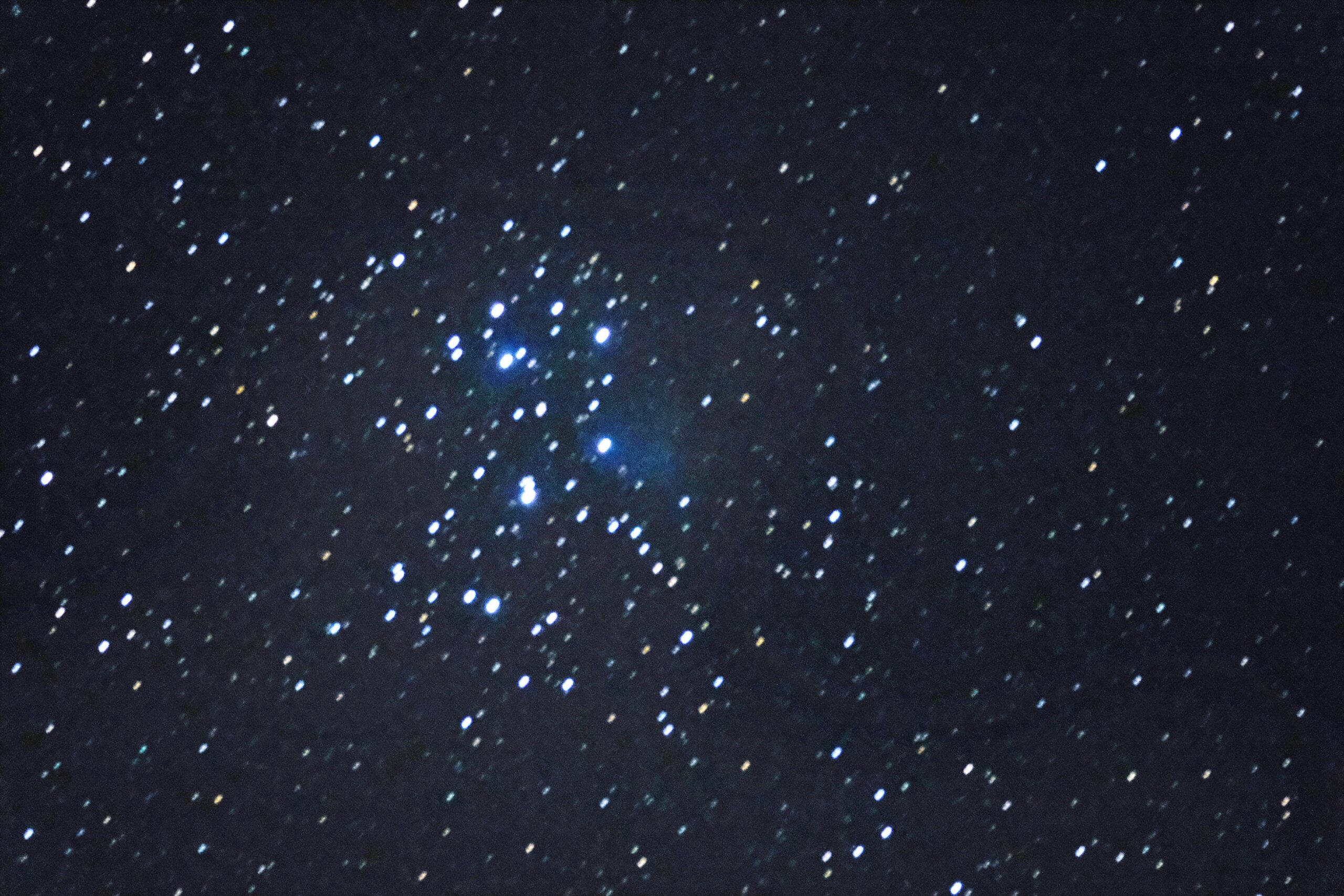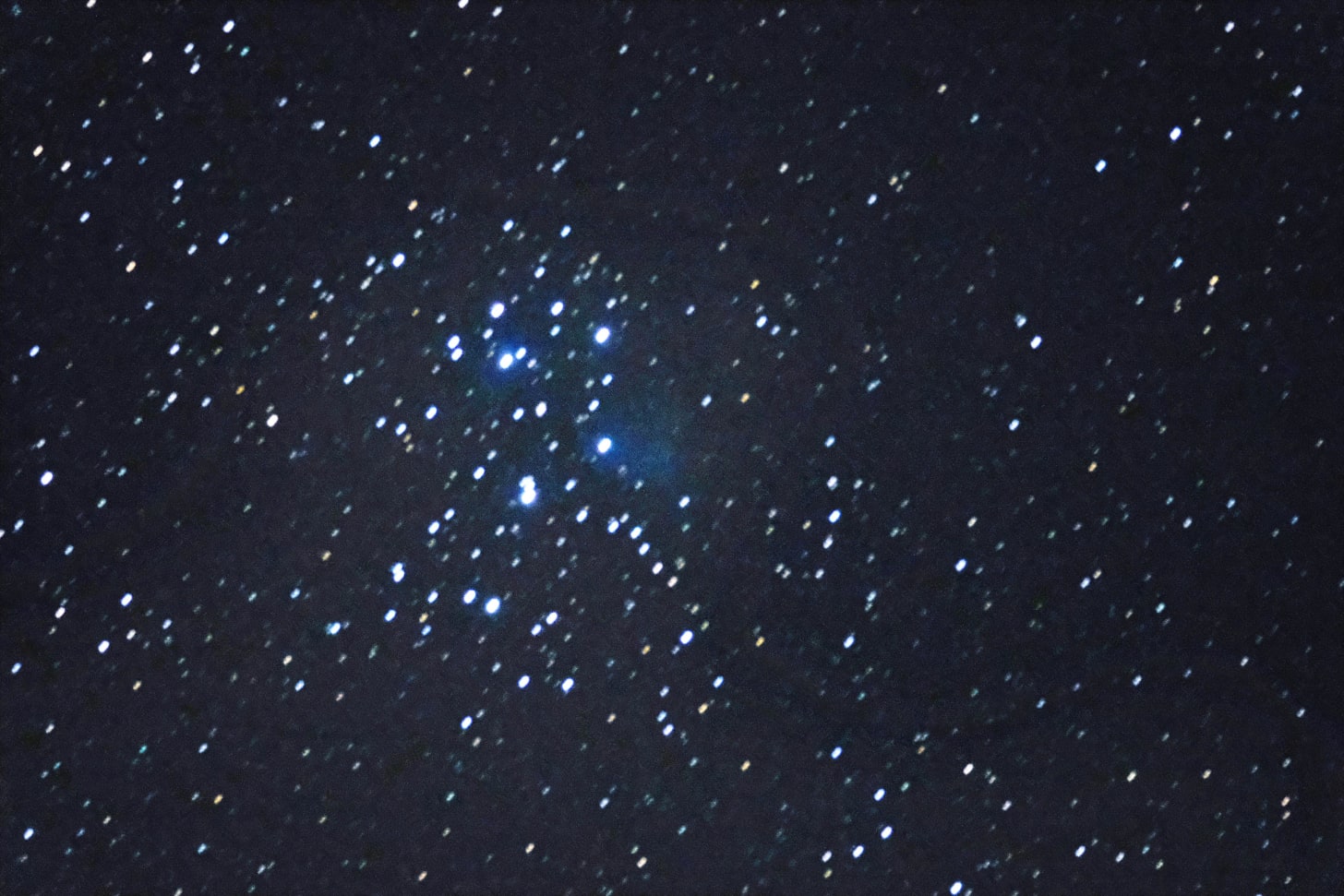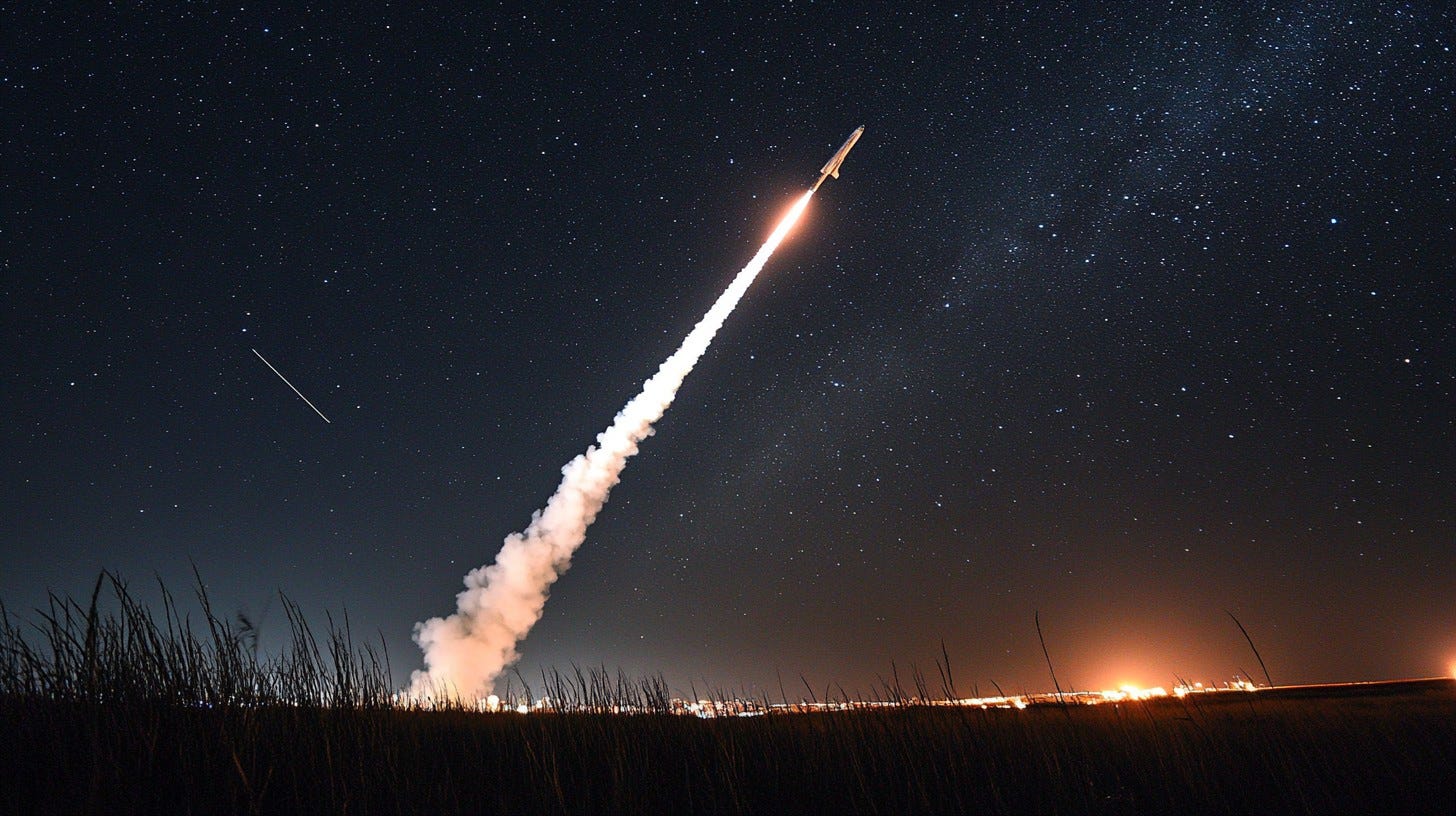At 4 AM in Ladakh, under the Milky Way’s ancient glow, I finally understood why my most significant transitions had felt so disorienting. The stars above me were already dead. Their light had traveled millions of years to reach my eyes tonight. Yet there I was, seeing them as brilliantly alive.
It was August, and though I was bundled up in my thermals, it wasn’t that cold. The amazing starlit sky inspired a profound thought: others see us the same way I see those stars. As the person we were, not the person we’re becoming.
That night revealed what I now call the Two Lights of Transition: the “long light” of our accumulated reputation that continues to define us long after we’ve changed, and the “shooting star light” of sudden insights that demand immediate attention. Every leader navigating change must learn to honor both. But most of us get trapped by one or are blind to the other.
When Your Past Won’t Let You Go
“Shotgun, Ajay.” I was on my second Old Monk rum with an old colleague, and he casually mentioned it. “That’s what we called you in those mad days with our team.” Moving fast, talking fast, scaling fast. Ambition was my permanent light, dazzling many around me.
Years later, after one of my coaching sessions with Rakesh, I found myself frustrated by the lack of intention he was showing. Later, I confided in a colleague, Sanjay, who was a much more experienced coach. “Chief, my coachee Rakesh is just not coachable.” And he said, “I have this idea for you,” leaning forward with a sense of curiosity. “How coachable are you right now?”
That sentence was a shooting star. Gone in an instant, but it completely rearranged my inner sky.
I was trying to coach the way I used to lead, but the “shotgun Ajay” identity that had served me for decades was now getting in the way. This is how transitions trap us: we keep leading from the ghost-light of past identities instead of embracing the stranger we’re becoming.
Redefining What “Driven” Means
The most profound transitions often happen without ceremony. Like my move to Goa. No announcement that I was redefining what “driven” means, just suddenly finding myself cycling through forest trails instead of racing through Monday meetings.
For years, I’ve put pressure on myself and others to deliver more within the five days of the week. Monday mornings were brutal. Waking up with my jaw clenched, I was already mentally attacking the week’s targets. But Goa changed something fundamental about my relationship with pace itself.
I discovered the Socorro plateau, a laterite plateau with unique trees, cycling paths, and rich bird life. Within 15 minutes of leaving my house, I could plunge into a green forest with mud trails that transported me to another world. It wasn’t about badge value or record-breaking speeds. Cycling became a spiritual salve, bringing purpose to my life in ways my urban existence never could.
My new chapter has taught me that slowing down doesn’t diminish ambition. It transforms it. It’s interesting to look back and realize that my earlier life as a driven executive wouldn’t have allowed me to embark on this new journey. I’ve come to realize that being “driven” can mean something entirely different. I can still achieve great results, but in unexpected and innovative ways. Same ambition, utterly different expression.
This is the Two Lights framework in action: honoring the ambitious executive I was (long light) while following the shooting star moments that whisper, “There’s another way.”
Shooting Stars Don’t Announce Themselves
The most transformative transitions often come suddenly when we least expect them, through strangers who appear:
The bare-chested runner during the Mumbai marathon who advised me, “Don’t fight the hill.” He reminded me that I could make up time during the downhill.
Years later, during another marathon attempt, this lesson proved profound. I had stopped wearing a watch, determined to just enjoy the run rather than chase a sub-2-hour time. Running my usual stride, not fighting the rhythm, a youngster came alongside me and said, “Uncle, can I run with you? I might make a sub-2 at this pace.” I smiled and told him to go ahead, thinking I’d slow down soon. But I realized then that just going with my flow, not looking at my watch, had actually gotten me to sub-2 pace! I finished at 2:03, satisfied. Slowing down improved my timing.
The coach who said, “How coachable are you?” revealed my path to becoming a better coach.
These shooting star moments don’t announce themselves with fanfare; they softly release insights that, if we’re paying attention, completely rearrange our inner sky.
I remember the exact moment I realized I was changing. It was 3 AM in Hanle when my friends shook me awake. “You have to see this,” they whispered.
I came out packed to my chin with thermals, still half-asleep, and saw Venus blazing beside the fantastic Milky Way. What struck me wasn’t just the beauty. It was recognizing that most of my transitions had happened like this: tentatively, silently, often when darkness still lingered.
Not with fanfare, but with whispered invitations to notice what was already changing inside me.
The Art of Holding Both Lights
My transition from corporate executive to entrepreneur to coach was a blurry, confusing process. At Shoppers Stop, I was learning to manage teams for the first time. At HDFC Bank, I was navigating scale and industry change. At Cequity, I was transitioning from a client role to an advisory position.
Each transition carried forward elements from before (long light) while demanding completely new capabilities (shooting star insights). The art isn’t choosing between them. It’s about learning when to let the right light lead.
My decision to carve my own path, despite the allure of my HDFC bank stock options, spoke to a deeper part of my identity. Even though I’ve moved on, that decision still shapes my narrative.
I had carried so many labels: executive, banker, corporate leader. Each had served me once, but something inside me was changing. A new identity was forming: entrepreneur. But what kind of entrepreneur did I want to be? On another Himalayan trek, walking beyond Tapovan under those same stars, I realized I wasn’t chasing the traditional paths. I wasn’t aiming to be a King (maintaining control and power) or to be Rich (aggressively scaling for financial returns). I was driven to build because I felt compelled to create something that didn’t yet exist but was desperately needed. I was an Explorer.
This is long light: the glow of past decisions and discoveries that continues to guide us long after we’ve moved on. I became an intrapreneur far before I became an entrepreneur.
For much of my career, I was “shotgun Ajay”: moving fast, talking fast, scaling fast. But it wasn’t just the pace. It was the language itself. Words can hurt or heal, and for years, I chose words as weapons. My vocabulary was warlike: attack, win, beat, defeat! Some from my HDFC bank and Cequity teams may still cringe when they hear “Wake up and smell the coffee.” My favorite phrase when pushing for urgency.
Ambition was my permanent light, propelling me forward and dazzling those around me. But when I transitioned into coaching, the shooting-star light of sudden lessons disrupted everything. I realized I add value not by holding an agenda but by letting my client own hers. The language of success doesn’t need to be aggressive.
For much of my career, I moved fast and let that steady glow define me. But I often missed the emotional sparks that flare briefly, offering sudden redirection. In Permission to Feel, Marc Brackett reminds us that emotions aren’t speed breakers. They’re information. They’re the light of the present moment, fleeting but luminous, if we permit ourselves to see them.
The Challenge of Being Seen
The deepest challenge of transitions is that others (and even we) keep mistaking the ancient light for present reality. People continue to see the glow of who we were, even when that star has long since shifted.
Most leaders chase shooting stars while ignoring the ancient light that actually guides them. Or worse: they get so attached to their long light that they miss every shooting star trying to show them what’s next.
T. S. Eliot captured this perfectly: “We die to each other daily. What we know of other people is only our memory of the moments during which we knew them. And they have changed since then… We must remember that at every meeting we are meeting a stranger.”
The cosmos itself models this perfectly. Stars are born, burn steadily for billions of years, then collapse in supernovae, scattering the elements that also make up our bodies.
In that Ladakh sky, I could sense both: the ancient light of constellations still glowing though some stars are long dead, and the sudden blaze of shooting stars, impermanent yet unforgettable.
Leadership transitions carry both these lights. Our reputation and past successes are the ancient glow that lingers. Our flashes of insight and reinvention are the meteors, demanding presence.
Your Two Lights
The next time you feel caught between the past you and who you’re becoming, remember the Ladakh sky: honor the ancient light that brought you here, but don’t miss the shooting star trying to show you what’s next.
Both lights are real. Both lights matter. The art of transition is learning to hold them together and knowing when to let one fade so the other can guide you home.
And this is what I have learned: you have to end before you begin. Every transition creates triggers that impact your identity. Who you think you are is changing, and a host of possible selves becomes available to those willing to look. The question isn’t whether you’ll transition. You already are. The question is whether you’ll notice the light.
Here’s what I want you to consider:
What’s your “long light”? The reputation, identity, or way of being that still defines how others see you and how you see yourself? The “shotgun” version of yourself that served you well but might now be limiting you?
What “shooting star” moment are you missing? What whispered insight, unexpected feedback, or gentle invitation to change are you dismissing because you’re too focused on preserving the glow of who you used to be?
Others see us as dead stars. Brilliant but gone. That is the essence of holding the two lights together: honoring the long glow of memory while daring to recognize, in ourselves and others, the stranger who has already changed.
The stars are still there above us tonight, ancient and immediate, permanent and fleeting. Just like the leaders we’re becoming.
(The stunning images in this piece capture the actual night sky I witnessed from Hanle. These photographs were taken by the incredible Jhankrit Ahuja (@jhankrit), who served as our astroguide during this journey. The entire Ladakh experience was expertly organized by Shilpa Sharma and Bindu Menon of Breakaway Travel (break-away.in/about-us/)







